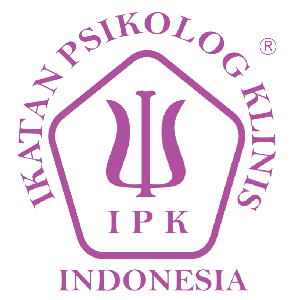Self-Esteem, Positive Experience, Negative Experience, and Life Satisfaction University Students
DOI:
https://doi.org/10.26740/jptt.v15n03.p256-262Keywords:
Life satisfaction, negative experience, positive experience, self-esteem, university studentsAbstract
Background: Changes in a person's life from adolescence to adulthood are accompanied by experiences in college life. Self-esteem, positive and negative life experiences, and student life satisfaction can be interesting topics to study in more depth. Objective: The objective of this study is to identify the correlation between self-esteem, positive experiences, negative experiences, and life satisfaction in university students. Method: The study used The Rosenberg Self-Esteem Scale (RSES), Scale of Positive and Negative Experience (SPANE), and Satisfaction with Life Scale (SWLS). The data analysis used Spearman's correlation technique. Results: (1) There is a positive correlation between self-esteem and life satisfaction, (2) there is a positive correlation between positive experiences and life satisfaction, and (3) there is a negative correlation between negative experiences and life satisfaction. Conclusion: Based on the results of the study, it can be indicated that there is a correlation between self-esteem, positive experiences, negative experiences, and life satisfaction of university students.
References
Arslan, G. (2019). Mediating role of the self–esteem and resilience in the association between social exclusion and life satisfaction among adolescents. Personality and Individual Differences, 151, 1-6. https://doi.org/10.1016/j.paid.2019.109514
Balgiu, B. A. (2021). Examining the subjective well-being in a students’ sample: Characteristics and structure. European Proceedings of Social and Behavioural Sciences, 104, 288-295. https://doi.org/10.15405/epsbs.2021.03.02.31
Barutçu Yıldırım, F., & Demir, A. (2020). Self-handicapping among university students: The role of procrastination, test anxiety, self-esteem, and self-compassion. Psychological Reports, 123(3), 825-843.
Busseri, M. A. (2018). Examining the structure of subjective well-being through meta-analysis of the associations among positive affect, negative affect, and life satisfaction. Personality and Individual Differences, 122, 68-71. http://dx.doi.org/10.1016/j.paid.2017.10.003
Cai, Z., Guan, Y., Li, H., Shi, W., Guo, K., Liu, Y., et al. (2015). Self-esteem and proactive personality as predictors of future work self and career adaptability: An examination of mediating and moderating processes. Journal of Vocational Behavior, 86, 86–94. https://doi.org/10.1016/j.jvb.2014.10.004.
Chen, W., Niu, G. F., Zhang, D. J., Fan, C. Y., Tian, Y., & Zhou, Z. K. (2016). Socioeconomic status and life satisfaction in Chinese adolescents: Analysis of self-esteem as a mediator and optimism as a moderator. Personality and Individual Differences, 95, 105-109. https://doi.org/10.1016/j.paid.2016.12.009
Diener, E., & Diener, M. (2009). Cross-Cultural Correlates of Life Satisfaction and Self-Esteem Culture and Wellbeing. Dordrecht, Netherlands: Springer.
Diener, E., Emmons, R. A., Larsen, R. J., & Griffin, S. (1985). The satisfaction with life scale. Journal of Personality Assessment, 49, 71-75. https://doi.org/10.1207/s15327752jpa4901_13
Djaling, K. W., & Purba, D. E. (2019). Efek mediasi makna hidup pada hubungan antara grit dan kepuasan hidup pada mahasiswa. Jurnal Psikologi Ulayat, 6(2), 135-149.
Gencer, E. (2020). The relationship between self-esteem, satisfaction with life and coach-athlete relationship. Journal of Educational Issues, 6(2), 493-505. https://doi.org/10.5296/jei.v6i2.18028
Hall, A. (2021). Life satisfaction, concept of. In Encyclopedia of Quality of Life and Well-Being Research (pp. 1-4). Cham: Springer International Publishing.
Hawi, N. S., & Samaha, M. (2017). The relations among social media addiction, self-esteem, and life satisfaction in university students. Social Science Computer Review, 35(5), 576-586. https://doi.org/10.1177/0894439316660340
Hurlock, E. B. (2009). Psikologi Perkembangan. Jakarta: Erlangga.
Jovanović, V., & Joshanloo, M. (2021). The contribution of positive and negative affect to life satisfaction across age. Applied Research in Quality of Life, 1-14. https://doi.org/10.1007/s11482-020-09903-5
Kardas, F., Cam, Z., Eskısu, M., & Gelıbolu, S. (2019). Gratitude, hope, optimism and life satisfaction as predictors of psychological well-being. Eurasian Journal of Educational Research, 19(82), 81-100.
Lazić, M., Gavrilov-Jerković, V., & Jovanović, V. (2019). The moderating role of trait affect in the relationship between negative life events and life satisfaction. Journal of Happiness Studies, 20, 2251-2267.
Lee, I. H., Sovet, L., Banda, K., Kang, D. K., & Park, J. H. (2021). Factor structure and factorial invariance of the career adapt-abilities scale across Japanese and South Korean college students. International Journal for Educational and Vocational Guidance, 21(2), 241-262.
Moussa, S., Malaeb, D., Barakat, M., Sawma, T., Obeid, S., & Hallit, S. (2023). Association between experiences in life and quality of life among Lebanese University students in a collapsing country: The moderating role of religious coping and positivity. Healthcare, 11(1), 149. https://doi.org/10.3390/healthcare11010149
Novianti, D. S., & Alfiasari. (2017). Kepuasan hidup mahasiswa tingkat pertama: Kaitannya dengan karakter mahasiswa dan gaya pengasuhan orang tua. Jurnal Ilmu Keluarga & Konsumen, 10(1), 13-23. http://dx.doi.org/10.24156/jikk.2017.10.1.13
Okwaraji, F. E., Aguwa, E. N., & Shiweobi-Eze, C. (2016). Life satisfaction, self esteem and depression in a sample of Nigerian adolescents. International Neuropsychiatric Disease Journal, 1-8. https://doi.org/10.9734/INDJ/2016/20805
Orth, U., & Robins, R. W. (2022). Is high self-esteem beneficial? Revisiting a classic question. American Psychologist, 77(1), 5-17.
Rahmawati, A. (2021). Kepercayaan diri pada mahasiswi pengguna kosmetik di Fakultas Ilmu Pendidikan Universitas Negeri Semarang. Konseling: Jurnal Ilmiah Penelitian dan Penerapannya, 3(1), 1-6.
Rosenberg, M. (1965). Society and the Adolescent Self-Image. Princeton, NJ: Princeton University Press.
Szcześniak, M., Mazur, P., Rodzeń, W., & Szpunar, K. (2021). Influence of life satisfaction on self-esteem among young adults: The mediating role of self-presentation. Psychology Research and Behavior Management, 1473-1482.
Telef, B. B. (2016). Investigating the relationship among internet addiction, positive and negative affects, and life satisfaction in Turkish adolescents. International Journal of Progressive Education, 12(1), 128-135. https://ijpe.inased.org/makale/24
Waskito, P., Loekmono, J. L., & Dwikurnaningsih, Y. (2018). Hubungan antara mindfulness dengan kepuasan hidup mahasiswa bimbingan dan konseling. Jurnal Kajian Bimbingan dan Konseling, 3(3), 99-107. https://doi.org/10.17977/um001v3i32018p099
Yildiz, M. A., & Karadas, C. (2017). Multiple mediation of self-esteem and perceived social support in the relationship between loneliness and life satisfaction. Journal of Education and Practice, 8(3), 130-139. https://eric.ed.gov/?id=EJ1131544
Yildirim, M. (2019). Mediating role of resilience in the relationships between fear of happiness and affect balance, satisfaction with life, and flourishing. Europe's Journal of Psychology, 15(2), 183-198. https://doi.org/10.5964/ejop.v15i2.1640
Downloads
Published
How to Cite
Issue
Section
License
Copyright (c) 2024 Farra Anisa Rahmania, Endah Puspita Sari

This work is licensed under a Creative Commons Attribution 4.0 International License.
Authors who publish in this journal agree to the following terms:
Copyright in any article is held by the author.
The author grants the journal, publication rights with the work simultaneously licensed under a Creative Commons Attribution License that allows others to share the work with an acknowledgment of the work's authorship and initial publication in this journal.
Authors may enter into separate, additional contractual arrangements for the non-exclusive distribution of the journal's published version of the work (e.g., posting it to an institutional repository or publishing it in a book), with an acknowledgment of its initial publication in this journal.
Authors are permitted and encouraged to post their work online (e.g., in an institutional repository or on their website) prior to and during the submission process, as this can lead to productive exchanges, as well as earlier and greater citation of published work.
 Abstract views: 969
,
Abstract views: 969
, PDF Downloads: 633
PDF Downloads: 633


















